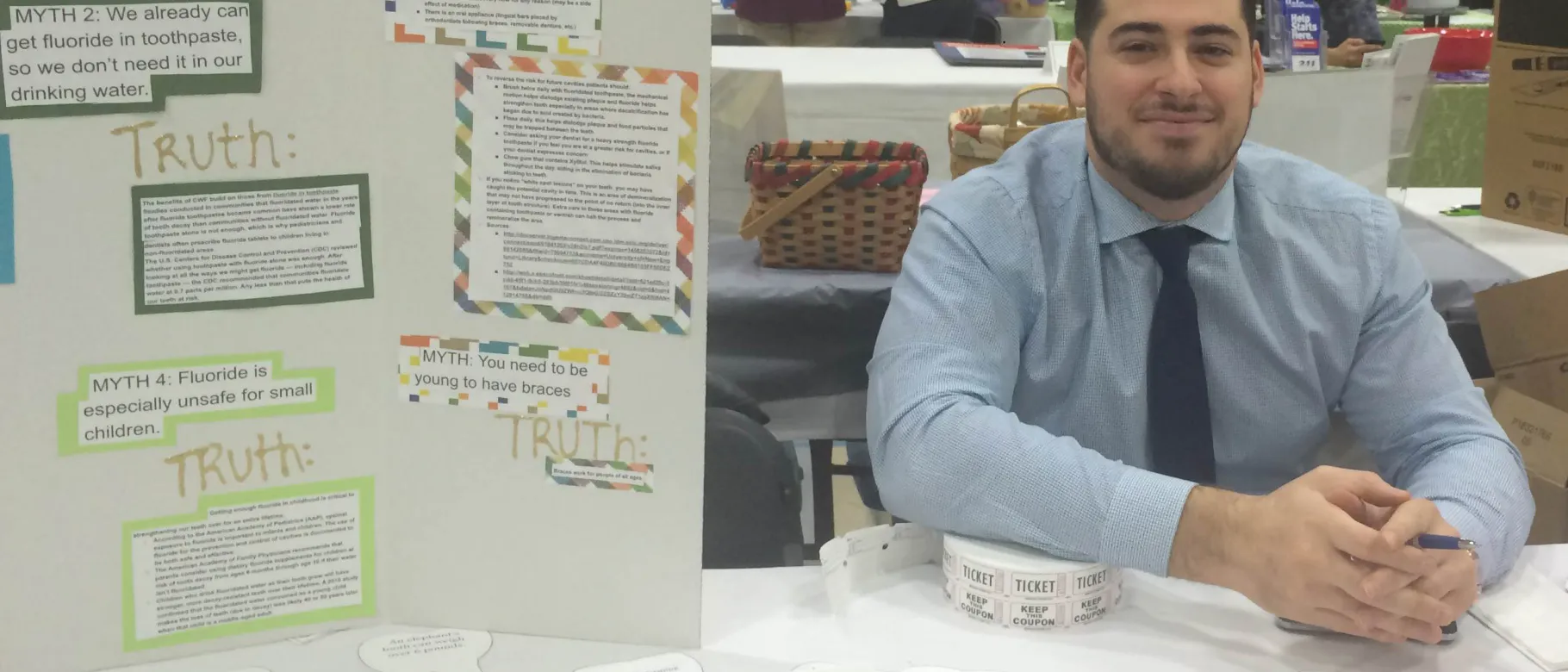Dental students address common oral health misconceptions at UNE’s Health Fair

Class of ’17 dental students Mitchell Mamorsky, Ava Lindert and David Velek presented their poster, “Debunking Dental Myths,” at UNE’s campus-wide Health Fair on March 10, 2016.
Mamorsky, Lindert and Velek were inspired to present on this topic as as result of questions asked by their dental patients. As Mamorsky explained, “with the internet and personal blogs, many people come to us misinformed about the facts behind proper oral hygiene.” Through their presentation, the students worked to dispel these inaccuracies, educating Health Fair attendees about fluoride, cavity prevention and the proper toothbrush to use.
Here are five of the most prevalent dental myths, paired with the true statements:
Myth: Oil pulling helps to prevent cavities.
Truth: An ancient Ayurvedic dental technique that involves swishing a tablespoon of oil in your mouth, oil pulling is said to improve oral health. However, according to a 2015 study testing the effectiveness of fluoride mouthrinse (active ingredient: 200 ppm sodium fluoride), herbal mouthrinse (active ingredient: 5mg Salvadora persica), oil pulling and distilled water, there was a marked decrease in the amount of Streptococcus mutans, the leading cause of dental caries, in groups that used fluoride and herbal mouthrinse. No significant reduction in bacterial count was found in the groups using oil pulling and the control group using distilled water. The study was done on 52 children twice daily for a period of two weeks. Read more.
Myth: Charcoal whitening is safe and effective.
Truth: In a 2015 study conducted by Lake Erie College of Osteopathic Medicine and presented at the Academy of General Dentistry, charcoal was tested against a generic brand whitening toothpaste and water as a control. Charcoal was found to be more abrasive than whitening toothpaste, which may give the appearance of whitened teeth. However, there was a potential for charcoal residue to embed into tissue, leaving a grey coloration. In addition, the abrasive nature of charcoal may lead to gingival recession over time. Read more.
Myth: Since toothpaste has fluoride, we don’t need it in our drinking water.
Truth: The U.S. Centers for Disease Control and Prevention (CDC) reviewed whether using toothpaste with fluoride alone was enough to prevent teeth from decay. After looking at all the ways we might get fluoride — including fluoridated toothpaste — the CDC recommended that communities fluoridate water at 0.7 parts per million. Any less than that puts the health of our teeth at risk. Read more.
Myth: Fluoride is especially unsafe for young children.
Fact: According to the American Academy of Pediatrics (AAP), optimal exposure to fluoride is important for infants and children. The use of fluoride for the prevention and control of cavities is documented to be both safe and effective. The American Academy of Family Physicians recommends that parents consider using dietary fluoride supplements for children at risk of tooth decay from ages 6 months through age 16 if their water isn’t fluoridated. Read more.
Myth: A hard-bristled toothbrush is better for cleaning.
Truth: For the vast majority of people, a soft-bristled toothbrush will be the most comfortable and safest choice. Depending on the strength of your teeth and how vigorously you brush them, medium and hard-bristled brushes could actually damage the gums, root surface and protective tooth enamel. Read more.